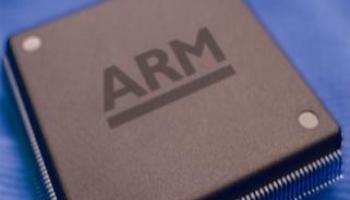ARM To Challenge Intel Domination Of Server Market

The boss of ARM Holdings has revealed the intention of taking on Intel with its own server chips in the next five years
ARM Holdings is not taking Intel’s move into its traditional patch lying down, after the boss of the smartphone chip maker said it plans to take on Intel in the server arena.
In an interview with Bloomberg News 13 December, ARM CEO Warren East said that his company’s chip designs will help drive up the energy efficiency of data centre systems, and that server makers “are actively considering ARM architectures.”
However, that will take time, East said, predicting that ARM won’t start to eat into Intel’s dominant server market share until 2014 or so. Intel currently owns more than 90 percent of the overall server market.
Realistic Timeframe
“We don’t want to raise expectations that next year there are going to be a lot of ARM servers,” he said. “Of course, there aren’t.”
But ARM, and some chip designers using ARM designs, have begun the work to move in that direction. ARM officials in September introduced the Cortex-A15, its next major chip design that they say will offer features that are important for server designers, including support for virtualisation and greater memory capacity. They also said the Cortex-A15 will include a five-fold increase in performance in a power envelope similar to current ARM designs, and that chips using the design will be able to run at up to 2.5GHz and with as many as 16 cores.
 “Its’a pretty big bump in peformance,” Nandan Nayampally, director of product marketing for ARM, said a the time of the announcement. “It opens up our markets to very new [products].”
“Its’a pretty big bump in peformance,” Nandan Nayampally, director of product marketing for ARM, said a the time of the announcement. “It opens up our markets to very new [products].”
A number of chip makers, including Texas Instruments, Qualcomm and Samsung, use ARM designs in manufacturing their processors, most of which go into such mobile devices as smartphones and tablet PCs. However, there are several other chip and systems makers looking to take advantage of ARM designs to create low-power servers for such environments as cloud computing.
Marvell officials in November started demonstrating their quad-core Armada XP chip, which is based on ARM designs. The chip runs at 1.6GHz and includes features that can be used in servers, including four enterprise-class networking ports, up to 2MB of Level 2 cache, 4 PCI Express Gen 2.0 units and multiple USB ports. Another company, Calxeda, is also working on server chips based on ARM’s Cortex-A9 design, with plans to release samples next year and start manufacturing the processors in 2012.
Energy Efficiency
ARM’s East said the key for his company is the ability now to free up their chip designs from the battery constraints found in mobile devices. Without those constraints, the ARM-based chips can run faster. They are also more energy-efficient than Intel processors, he said.
“We could certainly halve the power of these things,” East said, noting that with data centres packing more servers, “the challenge is delivering the energy and taking the heat away.”
Both Intel and x86 rival Advanced Micro Devices are eyeing the mobile device space as a way to expand their businesses beyond PCs and servers. At an event earlier this month, Intel President and CEO Paul Otellini said that he expects smartphones powered by his company’s upcoming 32-nanomater “Medfield” Atom processor will start hitting the market in the second half of 2011. Medfield is sampling now and will ship later in 2011 and into 2012.
Otellini also said that PC makers – including Dell, Asus, Lenovo and Toshiba – have said they plan to use Atom chips in 35 different tablet PC designs. Intel has two Atom platforms for tablet PCs – “Oak Trail” for tablets running Windows, and “Moorestown” for those running Google’s Android mobile OS and MeeGo, a Linux-based operating system developed by Intel and Nokia.